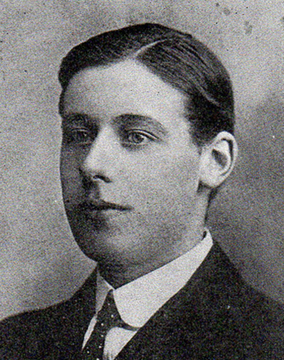
SCOTT, Bertram
| Service Number: | 6580 |
|---|---|
| Enlisted: | Not yet discovered |
| Last Rank: | Private |
| Last Unit: | 7th Infantry Battalion |
| Born: | Shetland Island, Scotland, date not yet discovered |
| Home Town: | Auburn, Boroondara, Victoria |
| Schooling: | Not yet discovered |
| Occupation: | Seaman |
| Died: | Pneumonia, Red Sea (HMAHS Kanowna), 1 February 1919, age not yet discovered |
| Cemetery: |
No known grave - "Known Unto God" Villers-Bretonneux Memorial, Villers-Bretonneux, Picardie, France |
| Memorials: | Australian War Memorial Roll of Honour, Villers-Bretonneux Memorial |
World War 1 Service
| 2 Oct 1916: | Involvement Private, 6580, 7th Infantry Battalion, --- :embarkation_roll: roll_number: '9' embarkation_place: Melbourne embarkation_ship: HMAT Nestor embarkation_ship_number: A71 public_note: '' | |
|---|---|---|
| 2 Oct 1916: | Embarked Private, 6580, 7th Infantry Battalion, HMAT Nestor, Melbourne |
LERWICK LAD'S LAST JOURNEY.
Transcribed from Australians & New Zealand in WWI
Private Bertram Scott, Service No 6580, 7th Battalion, Australian Imperial Force, died of pneumonia on board ship,ss Kenowna, between Port Said and Colombo on 1st February 1919. He was aged 21. Bertram was the son of John and Elizabeth, (nee Gray), formerly Adelaide, King Harald Street, Lerwick.
Bertram joined the 7th Battalion on the 7th of August, 1916, in Melbourne. Before enlisting, on the 2nd of August, 1916, he was employed as a Seaman.
The 7th Battalion was among the first infantry units raised for the AIF during the First World War. Like the 5th, 6th and 8th Battalions, it was recruited from Victoria and, together with these battalions, formed the 2nd Brigade.
He embarked on HMAT Nestor at Melbourne on the 2nd of October, 1916. He disembarked at Plymouth on the 16th of November. On 12 January 1917, he left for France from Folkestone on ss Princess Clementine. On 20 April 1918, he sustained a gunshot wound on his right leg which resulted in what was described as a 'very severely fractured tibia'. At the time Bertram was wounded, the 7th Battalion were at Le Peuplar (near Boore). They had been engaged with the Germans from the 12th to the 19th of April. Artillery fire had been constant throughout this period. On the 15th there had been a German raid on the Battalion lines which had been driven off by Lewis Gun fire. Total casualties for the Battalion in the line totaled:- 1 officer killed, 1 dying of wounds, 5 sick, 12 men killed, 51 wounded (8 since died).
The Diary notes that they spent the 20th resting, but was 'still under orders for a move a short notice'.
His health was said to be poor when he left for home on ss Kanowna on 5 January 1919. He passed away on the ship in the Arabian Sea.
Bertram is commemorated on the Villers Bretonneux Memorial in the Somme. Villers Bretonneux is a village east of Amiens on the straight main road to St Quentin. The memorial is the Australian National Memorial erected to commemorate all Australian soldiers who fought in France and Belgium during the First World War, to their dead, and especially to name those of the dead whose graves are not known.
The effects returned to his father included photos, postcards, letters, a purse, a cigarette holder, a whistle, an identity disc, a needle case, a cigarette case, a wound strip, a lead pencil, a map book, Gillette blades, a YMCA wallet, two pairs of socks, a halfpenny, a fountain pen and a wallet containing a watch and three coins. His brothers, Sergeant Frank Halcrow Scott was killed in action on 4th April 1917, aged 24, and Corporal Thomas Moffat Scott, Australian Light Horse, was killed on 14th July, 1918, aged 27.
Bertram was awarded the British War Medal and Victory Medal.
Sources:-
Shetland Family History Society.
Commonwealth War Graves Commission.
Service Record, National Archives of Australia.
Australian War Memorial.
7th Battalion War Diary.
Submitted 27 January 2019 by Evan Evans










